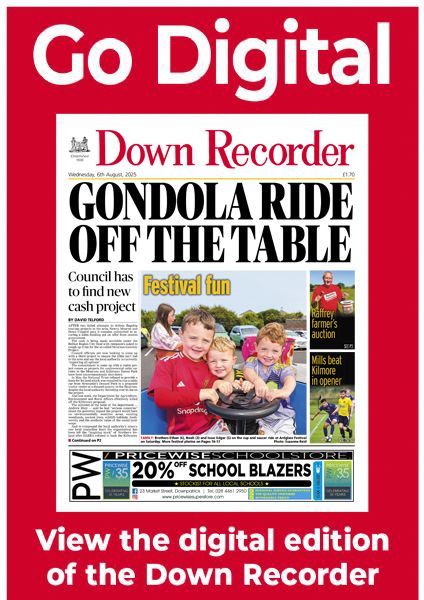Ambulance officials to be pressed at special meeting
Ambulance officials to be pressed at special meeting
22 October 2025
LOCAL hospital campaigners are to meet with senior Ambulance Service officials early next month.
The special meeting being organised by the Down Community Health Committee takes place in Denvir’s Hotel in Downpatrick on November 5 with the focus on the organisation’s new corporate strategy.
The comprehensive strategy entitled “Caring today, planning for tomorrow” focuses on transforming patient care, with its key elements including developing new clinical roles, enhancing staff skills and well-being, upgrading technology to electronic patient records in all ambulances, and improving estate and fleet.
The new strategy also emphasises collaboration with health partners, improving communication, and a commitment to a culture of quality and safety.
In relation to patient safety, the strategy highlights the need to develop advanced and specialist paramedic roles and expand care pathways, implement innovative education and teaching to drive clinical excellence and introduce new clinical support roles and models of care.
The new strategy also aims to enhance staff health and well-being and promote compassionate leadership and upgrade outdated systems and embrace new technology.
Significantly, the strategy focuses on improved communication and data sharing with other healthcare professionals and increase the size of the operational and corporate workforce to meet patient needs.
The Ambulance Service will be represented by Neil Gillan at next month’s meeting which will take place after it was revealed last week that a 93 year-old Downpatrick man waited six hours for an ambulance after sustaining a serious head injury in a fall at his home.
Mr Dermot MacNabb — who was a prominent member of the Down Community Health Committee and a vociferous campaigner for emergency services at the Downe — was taken to the Ulster Hospital in Dundonald.
The ambulance he was in had to park up outside in a long queue of emergency vehicles with patients on board waiting to be treated.
Mr MacNabb was eventually seen by emergency medical staff and had stitches ed in two head wounds, before he was placed back in the ambulance where his family say he remained overnight before being taken back into the hospital for a scan.
In the wake of he incident, his family called for the return of emergency services to the Downe Hospital, with the Ambulance service apologising for the six hour wait Mr MacNabb experienced waiting for paramedics to arrive.
The organisation said it was “sorry” for the delay and explained it operates a clinical triage system to ensure that the most clinically ill or urgent calls receive the most immediate response.
An Ambulance Service spokesman said Category 1 calls are those which are immediately life-threatening and should be responded to within an average of eight minutes.
He said Category 2 calls are those which are serious but not life-threatening and should be responded to within an average of 18 minutes, with Category 3 calls those which are urgent and for which an ambulance should be on scene within 120 minutes (two hours) for 90% of such calls.
The spokesman said an example of a Category 3 call would be a traumatic fall which is not immediately life-threatening.
“Regrettably, response times to those patients whose clinical need is less urgent, currently as a result of pressures, will be longer than might be expected by patients and their carers,” he said,
“We understand how stressful and upsetting it can be waiting for an ambulance which is taking longer that might reasonably be expected. It is not the service that we want to provide.”
The spokesman said NIAS will always try and respond to every call as quickly as possible and will continue to prioritise those calls which are immediately life threatening.
Next month’s meeting starts at 7pm.


